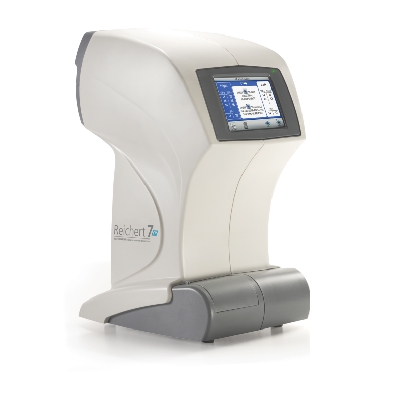 First of all, from the bottom of my heart, I have to thank Dave for leading me to my purchase of my tonometer; what a fantastic instrument!
First of all, from the bottom of my heart, I have to thank Dave for leading me to my purchase of my tonometer; what a fantastic instrument!
Several years ago, my ophthalmologist said that I probably had what is called "normal pressure" glaucoma; my pressure was usually 15-16 whenever he checked me, and the highest he ever recorded was 19 on my right eye. He told me to find a glaucoma specialist, so I did.
I went to the specialist for a couple of years, but several things discouraged me from continuing to see him. I found another ophthalmologist; she was somewhat younger and, I thought, perhaps less apt to be running a Speede Oil Change type of service, to see how many people she could get through her clinic in a day. She was a bit better at the latter, but she refused to give me a prescription for a tonometer. I left her and quickly acquired a tonometer prescription; and by the way, the requirement for a prescription for a non-contact tonometer is as silly as the need for me to have a real estate broker's license to sell real estate, or for a city to have building inspectors.
Are we really so stupid that we need the okay from government for everything? Had it been this way a hundred years ago, the Wright Brothers would never have gone beyond building a sturdy bicycle.
Due to an out of town trip, I just got a chance to use a tonometer suitable for home use. The instrument gives two readings:
- One is equal to a properly calibrated Goldmann Applanation Tonometer (GAT) used by ophthalmologists;
- The other is a reading that is better than GAT because it compensates for influences from corneal visco-elasticity and thickness; also, it gives a score that shows how reliable the measurement data are, with 1 being lowest and 10 being highest; a score of 9-10 means the computer has determined one has done a good measurement.
I was shocked at the instrument's accuracy. I awoke this morning at 2:20 and checked my IOP: The GAT would have read 18.9 in the right eye, and 18.0 in the left eye; but with the Corneal Compensated reading, I had pressures of 22.1 and 21 respectively. Yikes! So I did not have "normal pressure" glaucoma; I have real glaucoma. No telling what times of the day or night I had pressures nearing 30 or more prior to taking prescribed eye drops (currently three kinds).
Two things my ophthalmologists never told me:
- "Glaucoma is an extremely serious disease";
- "We're fools for leading patients to believe that we can monitor eye pressure by having them come into our office and use a second-class instrument to check your IOP once every three to six months!"
So if you have glaucoma, beg, borrow, or do whatever you must to obtain a real tonometer, preferably the Reichert 7CR. The latter is easier to use than a cell phone. Also, find an ophthalmologist that practices common sense and is doing everything he/she can for the good of your eyes.
I'm anxious to join the FitEyes group and their ongoing reasearch. And I'm looking forward to controling this lousy disease with as little conventional medicine as possible.
Filed Under (tags):
- Maurice Dubois's blog
- Log in or register to post comments

